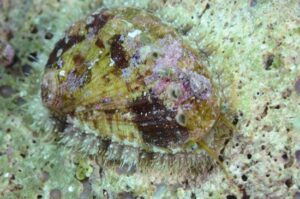In the southern part of Baja California Sur, on the Pacific Coast, the offshore high sea is a place of wonder for people passionate about fast-moving sea life.
Beyond the shallower part of the continental shelf, the ocean sinks to unfathomable depths and sustains one of the most elusive seasonal marine events on the planet. For a few weeks every year, sardines and mackerels migrate from south to north, bringing with them a plethora of hungry predators.
Sardines have historically gone through “boom and bust” changes in their populations, under the influence of many factors (by origin and impact), including fluctuations in abundance, index of stock biomass, food supply, the state of marine ecosystems and, of course, climatic conditions. All of this has a significant impact on predators, the fishing industry and the life of the local community.
Marine birds come from above whilst Striped Marlins, sea lions and sailfish come from below in an attempt to move the sardines and mackerels in to large bait balls to be devoured. The action can be fast and furious, ending in a matter of minutes, or last for a while, depending on the size of the bait ball and the voraciousness of the predators.
We don’t like to be caught unprepared, therefore, it is important to always be ready to slide in to the water with high-performance equipment. Since the local speedboats are not the best friend of open-cell neoprene (which can easily be cut by the rough material of the boat), we relied on our Reef 3mm neoprene wetsuits which are stretchy, ergonomic, easy to don and doff, beautiful and versatile. To stay warm, a long-sleeved rash guard and long trousers with UPF 50+ protection, such as the Trilastic Steamer, is the perfect addition. It is also perfect for protecting the whole body against UV rays when on the boat, where we spent hours navigating.
Here you can observe humpback whales while they migrate from the equator (their mating and breeding grounds) towards the Bering Sea (their feeding grounds), swimming solo or in small family groups usually made up of adult females, two/three year-old calves and sometimes an escorting male. Recently, curiosity and interest has increased for aggregations of mobula munkiana (monkey devil rays) which form large groups of tiny elasmobranchs and are occasionally hunted by orcas.
The main actor remains the Striped Marlin (Tetrapturus audax) or Nairagi in Japanese, which are large oceanic fish with long, round snouts, small teeth and a tall dorsal fin. As the majority among the predators, they are opportunists and remain in their playground until the stock of sardines decreases to the point where they do not find it convenient to stay around anymore.
The quantity of sardines and the location is very dependent on the water temperature and sea currents. Striped Marlins favour water temperatures of 20 to 25°C and spend most of their time near the surface of the water, hence we did not need heavy stuff to follow the tide and our playmates.
For us, trips to these waters are not to be missed for snorkelers and freedivers who are passionate about interactions with marine life.
To see more about our activities, don’t forget to follow us on our webpage, Facebook and Instagram, or sign up to our newsletters.
Normal
0
14
false
false
false
IT
X-NONE
X-NONE
/* Style Definitions */
table.MsoNormalTable
{mso-style-name:”Tabella normale”;
mso-tstyle-rowband-size:0;
mso-tstyle-colband-size:0;
mso-style-noshow:yes;
mso-style-priority:99;
mso-style-parent:””;
mso-padding-alt:0cm 5.4pt 0cm 5.4pt;
mso-para-margin:0cm;
mso-pagination:widow-orphan;
font-size:11.0pt;
font-family:”Arial”,sans-serif;
mso-fareast-language:EN-US;}
The post Baja California Sur – Pacific Coast, Offshore Adventure (Chapter Three) appeared first on Mares – Scuba Diving Blog.
Read MoreDiving, Baja California Sur, fish, freediving, Mares, mexico, ocean, photography, SSI, underwaterMares – Scuba Diving Blog


